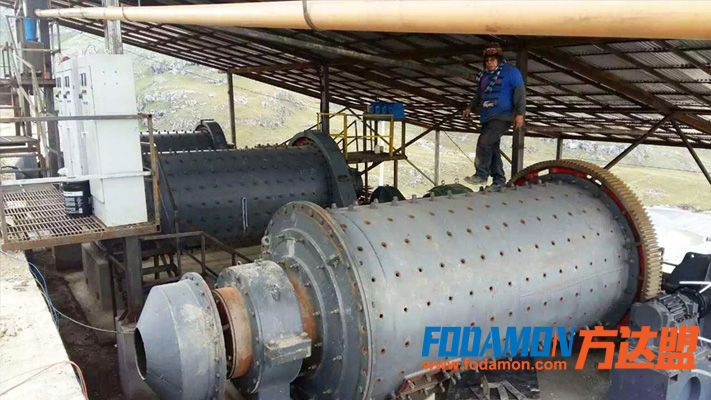The floatability of copper oxide ores is generally worse than that of copper sulfide ores, and is greatly influenced by the existing form of copper in minerals and gangue composition. For example, when copper is in the form of carbonate (malachite, blue copper ore), the flotability is relatively good, while the flotability of silicate (silica malachite) is poor, free copper oxide is easy to float, and copper oxide can not be recovered by a single flotation method. Copper oxide minerals in a separate state are called free copper oxide. All free copper oxide can dissolve in cyanide solution. When copper and gangue (e.g. iron hydroxide) are cemented together, copper oxide minerals in a certain form are called bound copper oxide. Their cementation patterns are various and can be mechanical. The method can be used as inclusion of extremely fine dispersed copper minerals in gangue, isomorphism in chemical way, and adsorption-type chromophore. All bound copper oxide can not be dissolved in cyanide solution. The percentage of bound copper in copper oxide is called the binding rate. Gangue minerals are mainly siliceous (e.g. quartz) and carbonate (e.g. calcite, dolomite) are easier to flotation. It is more difficult to separate gangue minerals when they contain more iron hydroxide and clay slime, especially when they are closely combined.

The flotation of oxidized minerals is mostly carried out by a vulcanization process. Because of the high flotation speed of oxidized ore after sulfidation, concentrate products are directly produced in the first 1-2 tank of the first roughing. Addition of reagents is of special significance to the flotation of copper oxide ores, especially sodium sulfide, which is not only an activator of copper oxide ores, but also an inhibitor of copper sulfide ores. Therefore, it is not appropriate to add enough reagents at one time, usually in batches and stages. Therefore, the first operation (roughing) in the flotation process is to add reagents in batches and stages. ) The addition of sodium sulfide is 70-80% of the total amount, which ensures that the concentration of sodium sulfide is sufficient and not excessive. When sodium sulfide is used to sulfide, lime is used as the adjusting agent of PH, and PH 8.5-9.5. Only when sodium sulfide is used can the ideal effect be obtained. When sodium sulfide is used, appropriate amount of ammonium sulfate and 1:1 sodium sulfide are added. It can improve the recovery of copper oxide ore. The reason is that the decrease of PH value after adding ammonium sulfate is beneficial to the increase of HS – concentration, the acceleration of sulfidation reaction and the flotation of copper oxide ore. However, when sulfide and oxidize mixed ores are beneficiated, ammonium sulfate can inhibit sulfide minerals when the amount of ammonium sulfate is too large. Therefore, the dosage of ammonium sulfate should be strictly controlled.
Adding hydroxamate and butyl xanthate in combination, it has strong ability to collect refractory minerals such as chrysocolla and copper-bearing limonite ore. Sodium hydroxysulphate has very good sulphide ore at PH10~11. Good harvesting effect, but when the pH is lower than 8, it is unfavorable for the selection of sulfide ore.
More about copper oxide ore. Welcome to contact us. Fodamon engineer will give reasonable suggestions according to your ore situation.
